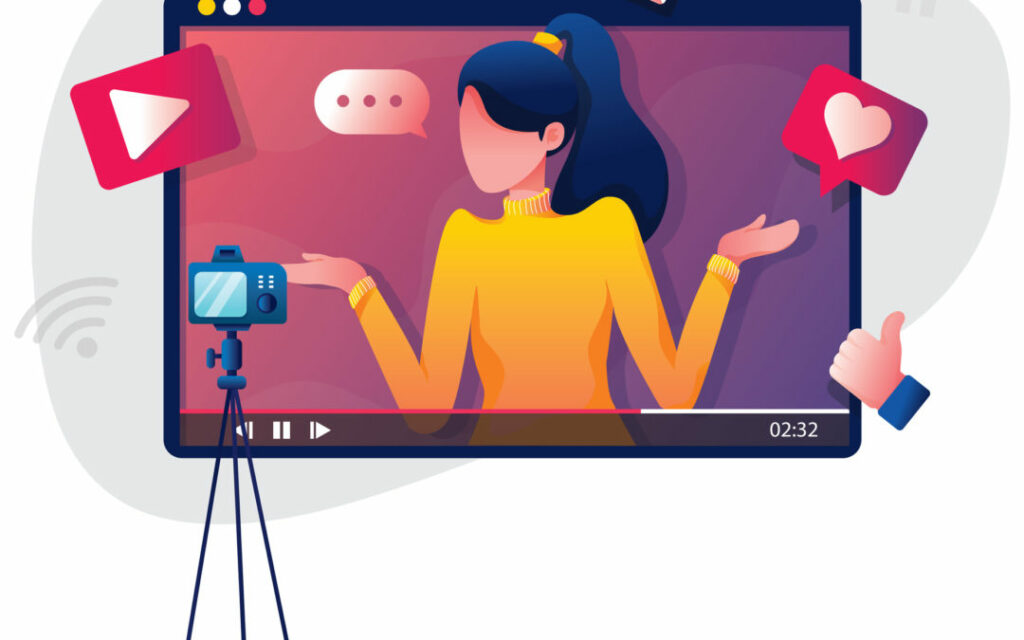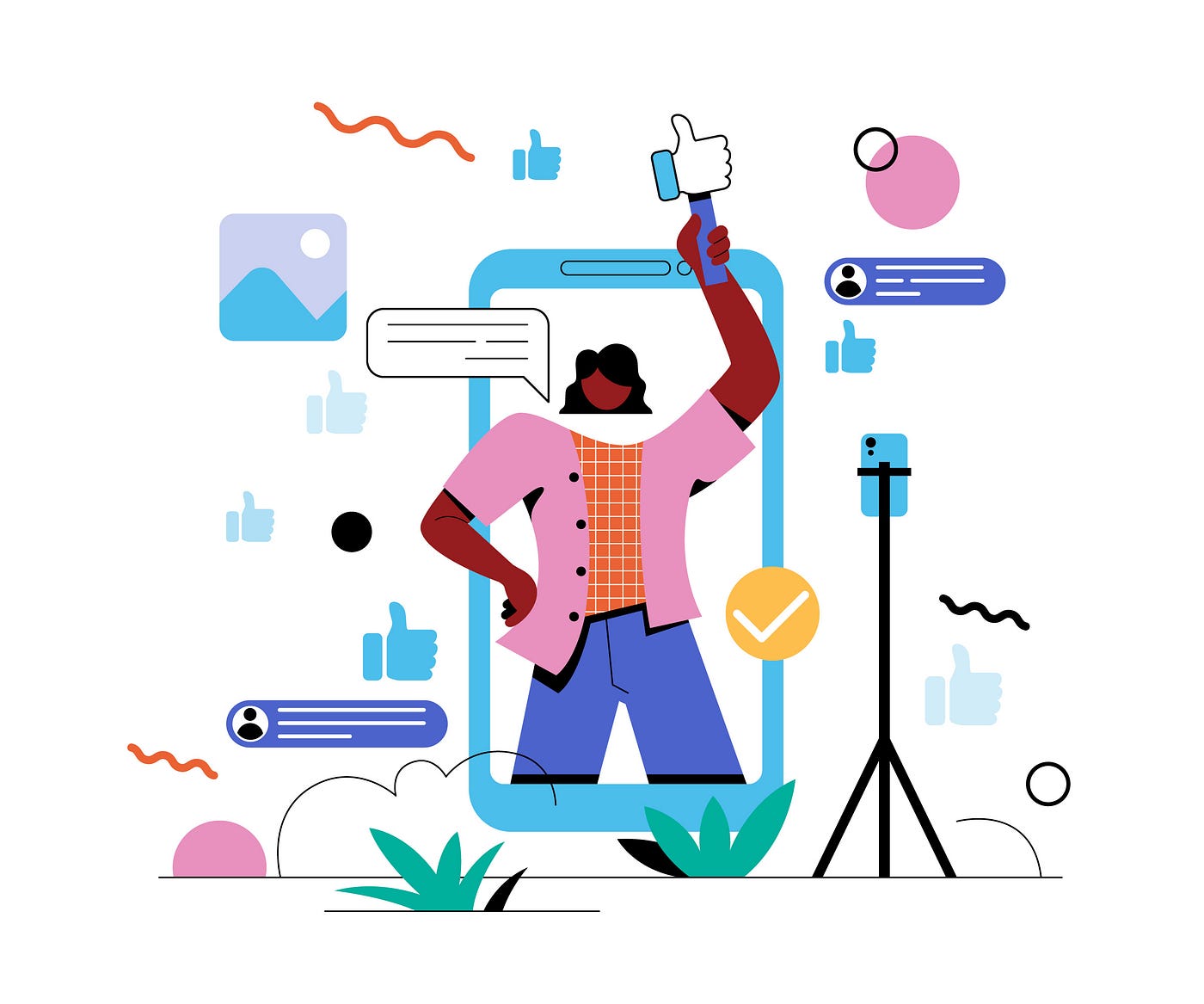Social media has been a massive success, taking over our lives and permeating our economy. One significant impact is influencer marketing, which is essentially when widely recognized online figures provide recommendations for products, such as a cool gadget they mention in a post on their channel. This can be wonderful for brands, as it opens up a new audience and an opportunity to increase sales. Like all tools, it has its pitfalls as well.
Let’s explore the good, the bad, and the bottom line of influencer marketing.
Table of Contents
Influencer Marketing Scope in 2025
The future of influencer marketing is all about hyper-targeting and stronger and deeper connections. We have moved past mass blasts and gimmicks that outlined previous influencer marketing campaigns.
Brands are targeting niche influencers that have a real community and are creating long-term partnerships. Micro-influencers are at the helm with their actively engaged audiences and are bringing greater engagement and ROI than the mega-influencers of the past.
Consumers want authentic representation of the lives they are living and are looking for content that reflects their reality. Expect to see more brand ambassadorships, co-created content, and data-driven strategies for measuring success. Consumers also want transparent partnerships. Brands will focus on more data when measuring success.
The effect of influencer marketing will be dynamic, moving forward, with a focus on quality and durability, especially purposefully cultivating influencer partnerships in preparing for future campaigns to create any lasting relationship for a consistent brand audience connection with strong presentational quality.
Facts and Figures of Influencer Marketing 2025
The global influencer marketing industry is projected to reach $32.6 billion in 2025—a 33% CAGR since 2020 (Influencer Marketing Hub).
Over 80% of brands still call influencer marketing “highly effective” in 2025
In the U.S., 86% of marketers plan to partner with influencers this year. (Sprout Social)
AI integration now boosts campaign results for 66% of marketers, with 73% saying it can largely automate influencer programs. (Influencer Marketing Hub)
Most brands (64%) use AI to identify influencers. (Adam Connell)
Pros and Cons of Influencer Marketing
You’re trying to grow your brand, but it isn’t easy. That’s why so many companies are turning to influencers to help them. But should you be using influencer marketing? Let’s look at the pros and cons.
Pros of Influencer Marketing
Take a look at a few of the pros and cons of using influencer marketing to market your product.
Audience Access
Think of it like this. When you market through influencer marketing, you are allowed to step into a busy stadium full of potential customers by going through the VIP entrance with trusted friends—the influencers. Since their followers trust them, they become your new audience.
Getting brand awareness isn’t about yelling across the field; it is about genuine and real conversations within active communities, one handshake at a time. That’s the beauty of an accessible audience.
Trust Boost
Influencers are like a quiet secret whispered from a trusted friend. Rather than blasting a commercial, they weave your brand story into their lives, making it authentic. Your product isn’t just a logo; it is the solution to their newest dilemma, the missing link to their ideal outfit, or the inspiration for their next adventure. The trust they’ve built with their audience spills over onto your brand, transforming skepticism into curiosity, then desire.

Authentic Storytelling
The difference is advertisers shout, and influencers whisper. They tell authentic stories about your brand and how it can enhance their incredible & everyday lives. They use your product while camping, cooking, or having fun.
Budget-Friendly Buzz
Influencer marketing buzzes with budget-consciousness. Micro-influencers, whose audiences are narrow, have a more targeted value than the spray and pray of mainstream media. Examples include aquariums, tourism boards, and fitness bloggers.
Now, on top of all of that, data-informed strategies help you find the right influencer, optimizing impact. It is more like talking in a hushed voice to the right audience instead of shouting to an audience with half measures.
Therefore, partner wisely, use data to your advantage, and you can see your brand bloom budget-friendly on a plan to fit a penny-pincher’s budget.
Quick Outcomes
One of the best benefits of influencer marketing? The results come fast! Influencers are often the people you want working for you because they have the skills, e.g., knowing the industry, reaching your demographic, and being tech-savvy marketers. They’ve built their success on these skills.
So, they need to know who, why, what their roles entail, and how your company works. Think of it like hiring professionals who don’t require any direction to immediately jump in and help your brand.
Cons of Influencer Marketing
Let’s take a look at some downsides of influencer marketing
Control Dilemma
Partnering with influencers can be an excellent way to reach new audiences, but this does include some level of relinquishing control of your message. While their own voice and perspective can add authenticity (and excitement) to your brand, if it does not align with who your brand is, it will be very confusing for the audience!
For example, consider a fitness brand partnering with an influencer who is all about sugar—and all of a sudden they are promoting sugary snacks with no mention of sports or fitness. This is an extreme example, but to the audience, that is not a good match!
Illusion of Authenticity
Forced partnerships, sponsored by press releases for influencer marketing campaigns, can be catastrophic. If a luxury watch brand had partnered with an influencer who focuses on budget travel, consumers—and any audience—would pick up on the authenticity from a mile away.
This scenario leads to brand damage and loss of trust. Authenticity matters: the partnership must come off authentically. The influencer will promote the brand as a natural fit and not as a marketing gimmick.
Fake Followers
There will always be increased numbers, as well as inflated metrics that are an influencer plague. Investing money and hoping for the best puts your brand message in front of ghost audiences, as only a small number of followers are real people. Money will be wasted, as chasing quick wins with fleeting campaigns is short-sighted and forgets the value of long-term relationships and leads to unreliable performance. Can you imagine how you’d feel if you paid a top-tier influencer with a large number of followers and it turns out that most of their audience was just not what you were expecting in terms of engagement!
Short-Term Sprints
Forget about trends going viral; think about developing real relationships with people who influence the audience and reflect your brand values. Sustainability and trust are at the heart of influencer marketing success, not insubstantial trends.
Get the Most of Your Marketing Outreach
Overall, influencer marketing is evolving beyond just flashy endorsements. Brands are embracing authentic partnerships with niche influencers and leveraging data and AI for smarter targeting and deeper audience connections. It’s about fostering trust and genuine interaction, proving its lasting value in the marketing landscape.
Influencer marketing can help your brand a lot, but you need to use it right. Think about the good and bad things that can happen, pick the right people to work with, and be honest and loyal to them. That’s how you can make influencer marketing work for you and grow your brand.
Let our digital marketing experts guide you in forming meaningful partnerships, utilizing data-driven strategies, and nurturing genuine connections. Elevate your marketing outreach—reach out to us today!
FAQs
- How can employers maintain accountability while offering autonomy?
Employers can set clear goals, track progress with key performance indicators (KPIs), and provide regular feedback. Open communication and periodic check-ins help ensure employees stay on track while enjoying their freedom.
- Does autonomy work for all types of jobs?
Autonomy is more effective in roles that require problem-solving, creativity, and independent decision-making. However, even structured jobs can benefit from some level of flexibility, such as choosing work methods or schedules.
- What are the risks of too much autonomy?
Without proper guidelines, excessive autonomy can lead to misalignment with company goals, lack of collaboration, or inconsistent performance. A balance between freedom and structure is key.
- How can new employees adapt to an autonomous work environment?
New hires may need gradual exposure to autonomy. Clear onboarding, mentorship, and defined expectations help them transition smoothly while building confidence in independent decision-making.



















